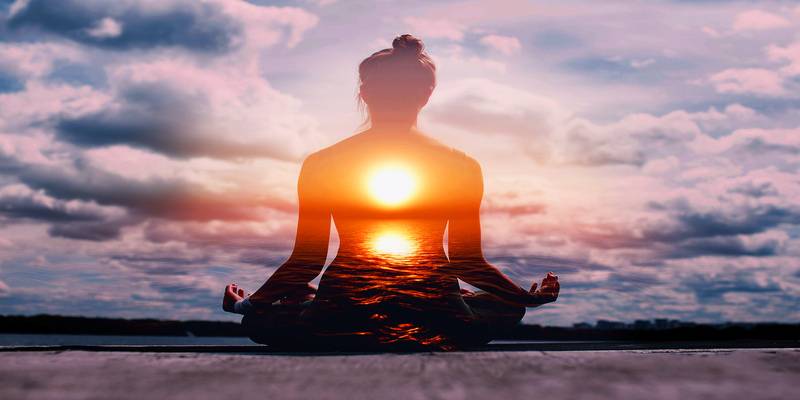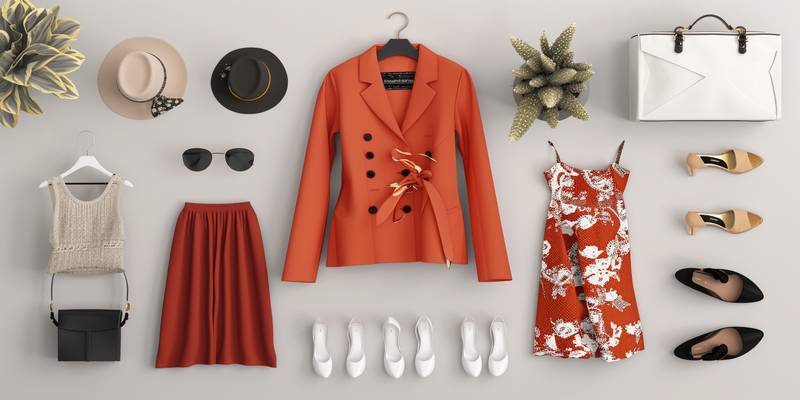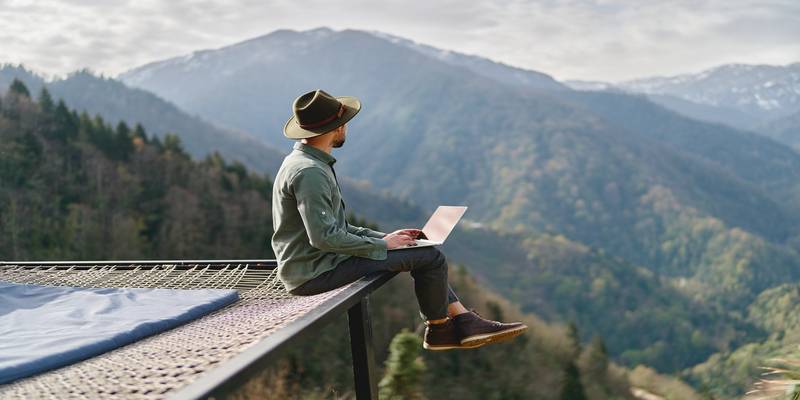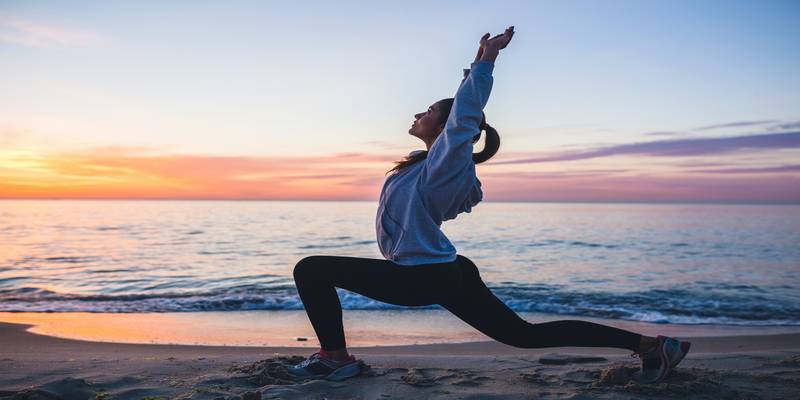Eat, pray, and yoga!

That is the mantra I have lived by ever since I first saw actor Julia Roberts — during the first wave of the pandemic — finding her calm through Yoga on-screen (watch “Eat, Pray and Love” to know what we are talking about) and satiating her hunger with some mouth-watering pasta. I wondered why I hadn’t watched that movie for all this time; the screenplay and acting are marvellous. Newly inspired, as I spread my Yoga mat and sat down to practice in my brand-new Yoga pants, I was agitated. I couldn’t calm my mind enough to flow from one pose to another as seamlessly as my online teacher had been doing. Every movement was a pain, and the best I could do during ‘Shavasana’, also known as ‘corpse-pose’, was sleep peacefully.
That was my first introduction to the form, but I persisted. To be honest, I didn’t want to fall behind on the newfound fitness trend that the world was hopping on. And, with time and some help, I did find my centre (yes, it is a thing; ask the Yogis) and found the calm that everyone, including Miss Roberts, had been talking about. Soon enough, I was delving deeper into it, digging up its history, looking at its point of origin, wondering how Yoga suddenly became the fad, and what are the basic but game-changing poses that everyone could indulge in.
A marriage of physical and mental well-being
If you do a simple Google search on Yoga, you will receive numerous results pointing at the same thing, that is, it is a primaeval practice mainly rooted in the South-East. Through its focus on strength, flexibility, and breathing, it gives a boost to physical and mental well-being. It mainly consists of a series of postures and breathing exercises specifically designed to increase strength and stamina.
While the modern hustle-bustle, filled with deadlines and social media addiction, along with a semi-lethargic lifestyle and not-so-happy news stories, has sent our routine and peace for a toss, Yoga is here to fine-tune the balance between the body and the mind and ensure that they are in perfect harmony with each other. This is a gift, now more important than any other time, whose scope even the ancient Yogic masters couldn’t have anticipated. Though it does sound like Yoga has a spiritual bend to it, it is not so. It is open to all – atheists, believers, people of all races, gender, spiritualism, religious practices, etc. The only condition is that you need to practice consistently to achieve the best results.
Yog, Yoga, Yogic – looking at it through a lens
Yoga, it is believed, originated more specifically in ancient India. There are pieces of evidence reaching as far back as 500 BCE suggesting that Yoga was practised in India during those times and, even through the turn of civilisations, maintained a firm grip on the Indian culture. Today, India is known as the Yoga capital of the world, and people seeking spirituality and mindfulness make their way to India to uncover the secrets of this ancient practice.
However, modern Yoga is a lot different from what the ancient civilisations were practising and has been influenced by different cultures across the globe. But its essence remains the same. The form was most famously introduced to the western world by Swami Vivekanand in the early 19th century. And, from there, a love affair of the world with the practice began. Today, there are numerous types of Yoga – some being more mindful than others – like, Bikram Yoga, Hatha Yoga, Kundalini Yoga, Vinyasa Yoga, and Anusara Yoga.
Bikram Yoga, or Hot Yoga, is a series of high-intensity poses done in a hot (105-degree F) and humid room. And, yes, it is named after the infamous Yog guru Bikram who was running a racket under the guise of Yoga ashrams. Hatha Yoga is one of the most famous forms that is widely practised these days as it teaches the unity of body and mind and focuses on cleaning the body inside out, thus making it healthier in the process.
Kundalini Yoga focuses more on the spirit and involves chanting, singing, and even dancing along with different Yoga poses. Vinyasa Yoga feels more like poetry as one moves from one pose to another almost seamlessly, while Anusara Yoga is a modern take on Hatha Yoga that focuses on bliss.
Basic Yoga poses you should be practising
Whether it be working on your flexibility or trying to achieve a certain level of calmness; these basic poses can help you with it:
Tree pose or Vrksasana
This seemingly simple pose can help you improve your focus, stability, balance, and increase muscle strength. It also helps tone your legs and strengthens the tendons. To do this pose, you need to first stand with your feet apart. Now slowly lift one foot up and press it in the centre of the thigh of the opposite leg. Stretch your arms straight above your head and bring your palms together. Focus on a distant object and hold this position for a few seconds – take 10 deep breaths. Now, let go and repeat the process with the opposite foot. Simple!
Bridge pose or Setubandasana
If you want to relax your mind and get a good night’s sleep, then this pose will help you out. It will also help keep anxiety at bay and maintain your blood pressure. Here is how you can master it: lie down on your back and raise your knees. Keep your feet firmly planted just below your knees. You can keep your hands on either side of your body, but don’t put pressure on it to raise your body up. Now, use your hips and thighs to push your knees further upwards. Hold this position for a few seconds, come back to the initial position slowly, and then repeat again. This will increase your flexibility over time.
Standing forward bend or Uttanasana
This pose stretches your muscles and strengthens the hamstrings and the calves. It is an intense stretching pose that should be employed gradually to increase flexibility. To do this exercise, stand tall and stretch your arms over your head. Now bring your arms down, bending forward – try touching your toes without bending your knees. However, don’t overstretch yourself and take things slowly.
Easy pose or Sukhasana
As the name suggests, this pose is very easy – you just need to sit cross-legged. Just sit with your legs crossed, left leg tucked under the right one, and right leg tucked under the left, straighten your spine, rest your palm on your knees and keep them facing upwards, and relax your mind and body. Start by focusing on your breath and then trace how each part of your body moves and reacts to every breath that you take in. Focus on releasing any and all toxicity from inside your body.
Cobra pose or Bhujasana
Cobra Pose sounds very intriguing as it has taken its name from the famous snake that is present everywhere in the Indian mythology. The intention behind this pose is to strengthen your lower back, relieve tension, fight fatigue, and boost overall health. For this pose, you need to lie down on your stomach. Press your body against the mat and press your palm down, placing it below your shoulders. Now slowly push your torso up – put weight on your hands as you push your chest and waist upwards. Pull your head back, away from your ear, and hold the pose for some time. Exhale and then come down slowly to the starting position.
Practice makes progress
It is easy to read about different poses, follow Yoga practitioners on social media, and even easier to get disheartened by the bulk of it all. But, as a practising Yogini, who goes by the handle of Yogagirlvibes, told me, “practice makes progress.” When I was losing sight of the healthier picture, she reminded me that everything you see online is a filtered-out version. “What you don’t see are hours and hours of imperfect and un-glamorous work of practice, of fails, and of ‘figuring it out’. It was as tough for me as it is for anybody else,” she shared.
So, like all the Yogis out there, keep practising, and don’t forget to give your body ample rest (we are not advertising procrastination) as you go on your personal journey of love and Yoga.






